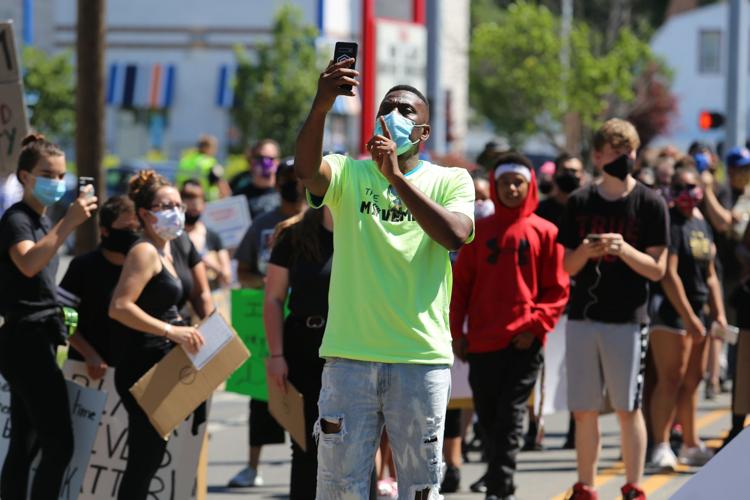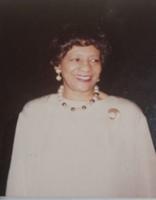SOUTHERN INDIANA — Over the past year, conversations about racial inequality in America have swept the country as protesters took to the streets after the killings of George Floyd and Breonna Taylor.
The pandemic has also shed light on racial disparities in health and socioeconomic factors as COVID-19 disproportionately affects people of color.
This Black History Month, the News and Tribune reached out to scholars at Indiana University and University of Louisville for their perspective on the Black experience in America — both historically and currently.
Structural issues are at the root of many problems of racial inequality that continue today, according to Jakobi Williams, associate professor in Indiana University’s Department of History and Department of African American and African Diaspora Studies.
“A lot of what we saw taking place over the summer was not a new phenomenon but a continuation of long political trends when you are looking at policing, when you are looking at medical disparities and all of those aspects,” Williams said. “It’s a continuation of long political trends the community is still dealing with.”
Williams emphasized that a major part of the Civil Rights Movement was about enforcing laws such as those under the 14th and 15th amendments and the Brown v. Board of Education ruling at state and local levels.
“Campaigns revolved around issues of community and policing, and law enforcement were not enforcing some of the measures when it came to communities of color, particularly African Americans, and campaigns often fell on deaf ears,” he said.
The Black Lives Matter protests in 2020 after the killings of George Floyd and Breonna Taylor have sparked conversations about institutional racism and police accountability.
“They are asking those representatives to do their job in actually holding the police accountable when they break the law, and that seldom happens,” Williams said.
Williams said areas such as policing, education and housing are among those where Black Americans continue to see disparities decades past the Civil Rights Movement of the ‘50s and ‘60s.
Historically, discriminatory urban zoning practices called “redlining” in the 20th century restricted housing opportunities for Black Americans, and inequality in housing continues today, Williams said.
Williams said obstacles to home ownership for Black Americans play a major role in the racial wealth gap.
“Living in nest eggs, owning home are ways in which we finance the next generation, finance kids’ education for college, take vacations and have financial opportunities,” he said. “If you are set out of the market of home ownership, you cannot build wealth.”
W.S. Tkweme, assistant professor in the University of Louisville’s Department of Pan-African Studies, also emphasizes that structural issues of racial inequality have continued past the Civil Rights Movement.
“If you track [the Civil Rights Movement] as it fades away from a mass movement, it’s not like people were like, we achieved our goals, now can get back to lives,” he said. “If you look at the hardcore activists of the time, they end up feeling defeated, like this problem is so much larger, we thought if we got Jim Crow laws off the books it would set up a position for much better progress toward equality.”
Tkweme has some skepticism about whether recent calls for police reform will lead to lasting institutional changes in the country, noting the political pushback such measures tend to receive.
“As far as some actual genuine change in the police departments, the police unions have such great power, and reforming a police department is only one aspect in terms of talking about things like structural oppression and structural inequality,” he said.
The past year has also highlighted issues of health inequities. Vicki Hines-Martin, nursing professor and associate dean of the Office of Community Engagement and Diversity at the University of Louisville, said health disparities among the Black community have been exacerbated with the COVID-19 pandemic.
For example, minority populations such as Black people, Hispanic people and Native Americans have higher rates of cardiovascular disease, diabetes and asthma, putting them at higher risk for COVID-19, she said.
“If you are already at a higher degree of experiencing these conditions already, that’s putting you at higher risk for COVID-19 and for really negative outcomes for COVID,” she said.
Many of these factors are related to “social determinants” such as healthcare access, socioeconomic status and the communities people live in, and factors such as access to grocery stores can play a role in people’s health.
The rate of COVID-19 vaccinations among Black people has also been lower than White people in the United States, according to Hines-Martin, which could be related to access to distribution sites and hesitation to receive the vaccine.
Williams said despite historic gains in civil rights, Black Americans have also been fighting some of the same conditions for the past 100 years or so.
“To open access and opportunity for others we can’t just be relying on the same methods we relied on in the past,” Williams said. “For economic equality, we need home ownership and decent education, which will help prevent poverty and crime.”
Williams said it is important not to have a “colorblind approach” to issues of race.
“The colorblind approach does not work,” he said. “By saying you don’t see race, it does not help us deal with conditions of racism, racial disparities and racial discrimination. To deal with it, we must first take account of it so we can tackle it and in doing so open the doors for more opportunities for others.”
As the country recognizes Black History Month, Williams says he wants people to understand that “Black history is American history — it’s not just about a group in the margins.”


















Commented
Sorry, there are no recent results for popular commented articles.